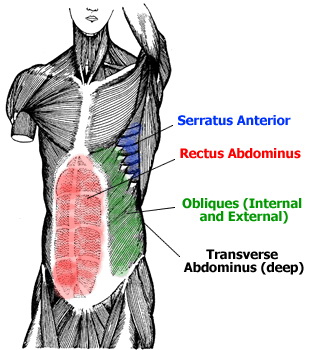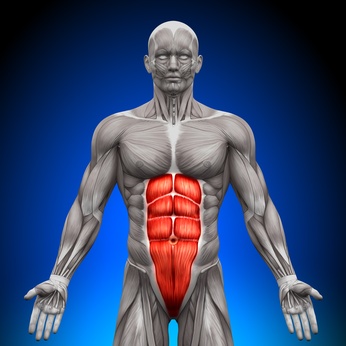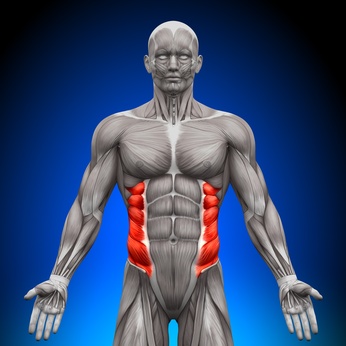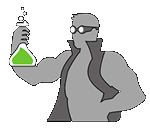
Anatomy Chart courtesy of FCIT
The Abdominal muscles sit on the front and sides of the lower half of the torso, originating along the rib cage and attaching along the pelvis.
The Rectus Abdominis muscle is commonly known as the "six-pack" muscle of the abs. Thin bands of connective tissue give it that appearance.
The Transverse Abdominis (also known as the Transversus) is the deepest muscle of the core (meaning it's underneath all the other muscles). It wraps laterally around the abdominal area.
The fibers of External and Internal Obliques run diagonally on the body, allowing for angled movement.




